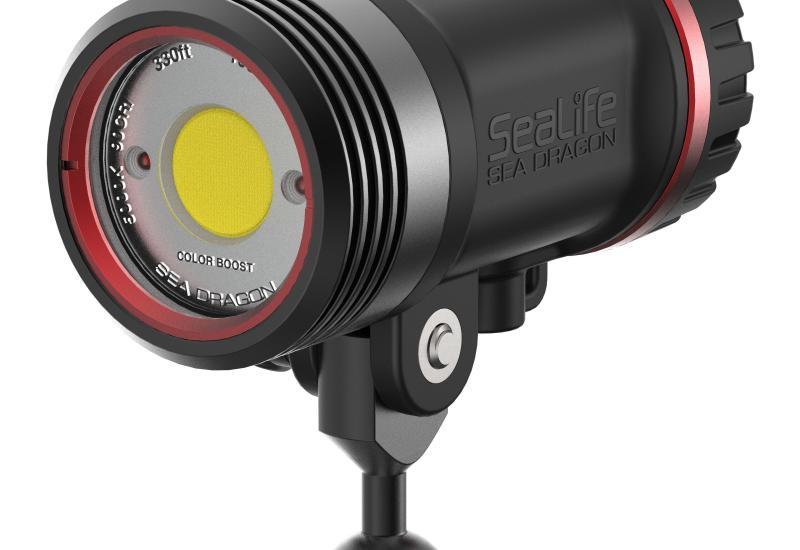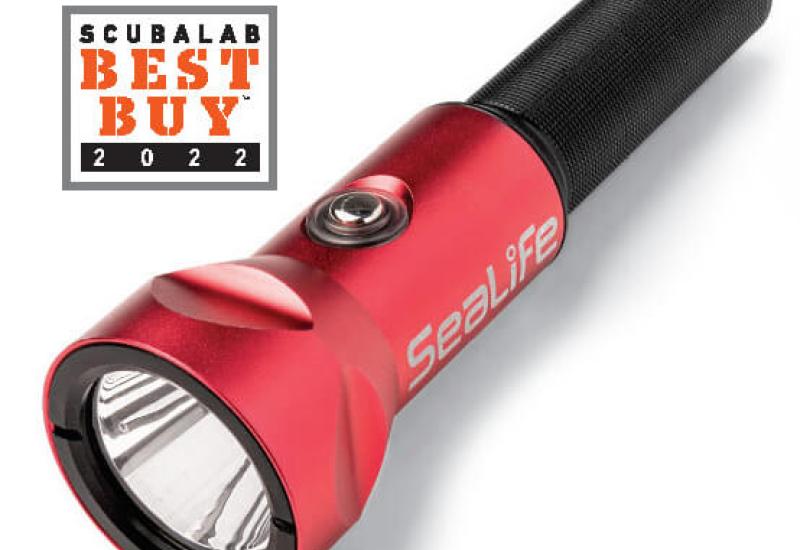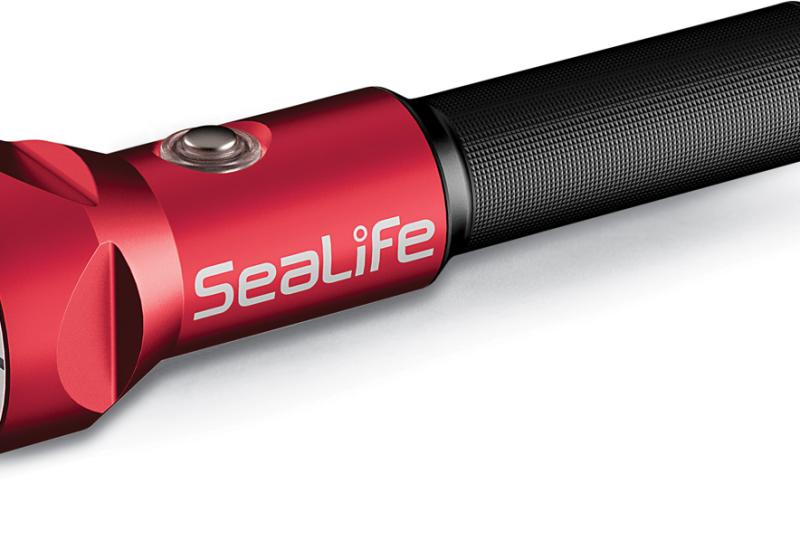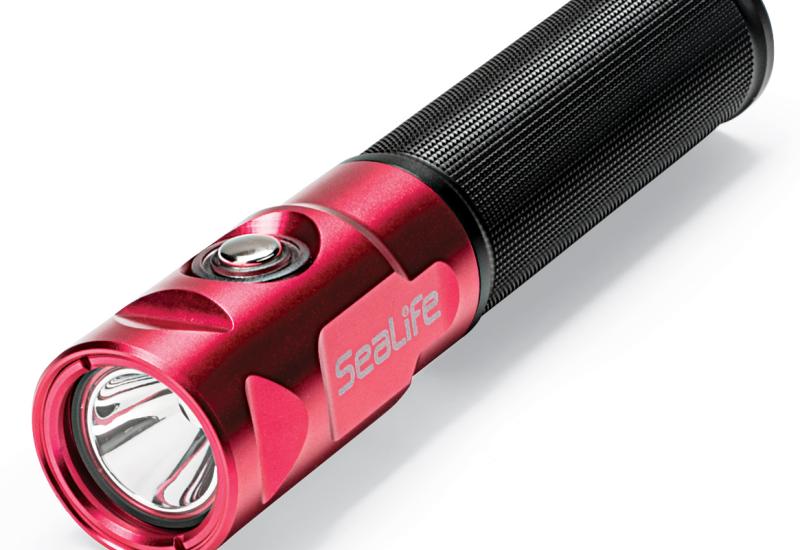Housed Systems: Are You Ready?
||
|---|
|  |
|
The more you shoot underwater images, the more likely you are to ask yourself the question: Should I upgrade to a housed system? With all the options available in underwater imaging today, the question is more complex than it used to be. Make sure you have answers to these key questions:
1) What do I want to shoot?
If you want to shoot invertebrates or small things that don't move much, it's hard to beat a Nikonos or Sea & Sea Motormarine II EX with macro accessories. If you want to shoot wide-angle pictures of your dive buddy, reef scenics, shipwrecks or large marine life, both the Nikonos and Sea & Sea cameras have excellent lens and viewfinder options that are easy to use and are superbly corrected for underwater use. But if you want precisely composed pictures of reef fish, small, elusive subjects or over-under images, the housed camera is a must.
2) How deep is my art?
When it comes to translating what you see in your mind's eye to film, there is no alternative to seeing the image through the lens, not the separate viewfinder of an amphibious camera. The reflex viewing afforded by the housed SLR (single-lens reflex) is a critical component in creating the perfect composition: what you see is what you get.
3) Do I own the right camera for an underwater housing?
In the old days, this meant one of the Nikon F series cameras or the Canon F1. Both had interchangeable sport viewfinders that made it easy to see the camera's ground glass even while wearing a dive mask. Today, housing manufacturers have designed accessory viewfinder devices that make even conventional topside cameras viable. Ikelite has perfected this concept and offers dozens of iterations of the same basic molded Lexan housing to accommodate a wide variety of different cameras. Aluminum housings, on the other hand, are typically cast to accommodate the controls on a specific camera. A Nikon F5 won't work in a Nikon F100 housing, for example. The most popular cameras for cast aluminum housings still tend to be Nikon--specifically the F100, N90S and F5.
So, if you already have a topside camera and a complement of lenses appropriate for underwater use, you will have excellent and reasonably priced options from Ikelite. Cast aluminum housings for Nikon cameras are available from Sea & Sea, Seacam, Subal, Nexus and Aqua Vision, as well as several other manufacturers predominantly distributed in Europe or Japan. Canon and Minolta shooters have options for aluminum housings as well, but TTL compatibility will unfortunately be a problem.
4) Is autofocus important to me?
Autofocus is available only with housed single-lens reflex cameras and the amphibious Nikonos RS. With a viewfinder camera, you will have to estimate the distance between your camera and subject, manually set the distance on the lens barrel, and hope that you are accurate enough or have sufficient depth of field to come up with a sharp picture. With autofocus reflex cameras, focus is easily accomplished simply by positioning the subject in the viewfinder target and pressing down on the shutter release.
5) How important are quick underwater mobility and the ability to travel light to me?
Housings are far more cumbersome than either the Sea & Sea or Nikonos amphibious cameras. The newer housings are far more refined and ergonomic than they used to be, but still, in order to fit the camera inside and have room to operate the shafts and gears that allow complete access to camera controls, housings can be sort of large, especially when big domes or macro telephoto ports are attached. If you are free diving after spotted dolphins or swimming against a heavy current, the weight and water resistance of the housing can be a challenge compared to the small amphibious cameras. There is no question that the housings will take a larger case for transport, will take up more room on the camera table, and will be a bit more effort to handle under water.
Housing vs. Amphibious: What's the Best Buy?
The answer is an unflinching "It depends."
If you already own a topside camera and a few lenses that are appropriate for underwater use, the housing can be a terrific bargain. Even if you have to buy the camera, the housed system may make sense, depending on which amphibious system you are considering.
If the budget is tight, you'll definitely end up saving money going with Sea & Sea Motormarine II EX and a couple of supplementary lenses for macro and wide-angle.
Although the amphibious 15mm and the 20mm for the Nikon N90S lenses both offer 94 degrees of coverage, it's not exactly an apples-to-apples comparison. The 15mm for Nikonos is better corrected optically for underwater use, while the housed 20mm gives auto-focus and reflex viewing. Price nod here will probably go to the housing.
Since this does not include the cost of a housing, the price advantage is clearly to the Nikonos. But again, it's not exactly apples-to-apples. Quality fish photography is far easier to do with a housed camera than it is with the Nikonos.
Bottom Line - If I had to go on location with just one camera system, I'd use my housed camera with a variety of lenses and ports. What's best for you? More than any other factor, decide what kinds of subjects you like to shoot, and find the tool that does that task best at a price you can afford.
EXAMPLE 1
Wide-Angle Setup
Amphibious
Nikonos 15mm lens plus viewfinder: $2,240
Nikonos V body: $750
Total: $2,990
Housed SLR
Nikon N90S body: $750
20mm lens: $450
Housing & dome port: $1,750
Total: $2,950
EXAMPLE 2
Macro Setup
Amphibious
Nikonos V w/ 35mm lens: $750
Macro extension tubes: $125
Total: $875
Housed SLR
N90S body and 60mm Micro-Nikkor: $1,100
Total: $1,100
|| |---|
| |
The more you shoot underwater images, the more likely you are to ask yourself the question: Should I upgrade to a housed system? With all the options available in underwater imaging today, the question is more complex than it used to be. Make sure you have answers to these key questions:
|
The more you shoot underwater images, the more likely you are to ask yourself the question: Should I upgrade to a housed system? With all the options available in underwater imaging today, the question is more complex than it used to be. Make sure you have answers to these key questions:
1) What do I want to shoot?
If you want to shoot invertebrates or small things that don't move much, it's hard to beat a Nikonos or Sea & Sea Motormarine II EX with macro accessories. If you want to shoot wide-angle pictures of your dive buddy, reef scenics, shipwrecks or large marine life, both the Nikonos and Sea & Sea cameras have excellent lens and viewfinder options that are easy to use and are superbly corrected for underwater use. But if you want precisely composed pictures of reef fish, small, elusive subjects or over-under images, the housed camera is a must.
2) How deep is my art?
When it comes to translating what you see in your mind's eye to film, there is no alternative to seeing the image through the lens, not the separate viewfinder of an amphibious camera. The reflex viewing afforded by the housed SLR (single-lens reflex) is a critical component in creating the perfect composition: what you see is what you get.
3) Do I own the right camera for an underwater housing?
In the old days, this meant one of the Nikon F series cameras or the Canon F1. Both had interchangeable sport viewfinders that made it easy to see the camera's ground glass even while wearing a dive mask. Today, housing manufacturers have designed accessory viewfinder devices that make even conventional topside cameras viable. Ikelite has perfected this concept and offers dozens of iterations of the same basic molded Lexan housing to accommodate a wide variety of different cameras. Aluminum housings, on the other hand, are typically cast to accommodate the controls on a specific camera. A Nikon F5 won't work in a Nikon F100 housing, for example. The most popular cameras for cast aluminum housings still tend to be Nikon--specifically the F100, N90S and F5.
So, if you already have a topside camera and a complement of lenses appropriate for underwater use, you will have excellent and reasonably priced options from Ikelite. Cast aluminum housings for Nikon cameras are available from Sea & Sea, Seacam, Subal, Nexus and Aqua Vision, as well as several other manufacturers predominantly distributed in Europe or Japan. Canon and Minolta shooters have options for aluminum housings as well, but TTL compatibility will unfortunately be a problem.
4) Is autofocus important to me?
Autofocus is available only with housed single-lens reflex cameras and the amphibious Nikonos RS. With a viewfinder camera, you will have to estimate the distance between your camera and subject, manually set the distance on the lens barrel, and hope that you are accurate enough or have sufficient depth of field to come up with a sharp picture. With autofocus reflex cameras, focus is easily accomplished simply by positioning the subject in the viewfinder target and pressing down on the shutter release.
5) How important are quick underwater mobility and the ability to travel light to me?
Housings are far more cumbersome than either the Sea & Sea or Nikonos amphibious cameras. The newer housings are far more refined and ergonomic than they used to be, but still, in order to fit the camera inside and have room to operate the shafts and gears that allow complete access to camera controls, housings can be sort of large, especially when big domes or macro telephoto ports are attached. If you are free diving after spotted dolphins or swimming against a heavy current, the weight and water resistance of the housing can be a challenge compared to the small amphibious cameras. There is no question that the housings will take a larger case for transport, will take up more room on the camera table, and will be a bit more effort to handle under water.
Housing vs. Amphibious: What's the Best Buy?
The answer is an unflinching "It depends."
If you already own a topside camera and a few lenses that are appropriate for underwater use, the housing can be a terrific bargain. Even if you have to buy the camera, the housed system may make sense, depending on which amphibious system you are considering.
If the budget is tight, you'll definitely end up saving money going with Sea & Sea Motormarine II EX and a couple of supplementary lenses for macro and wide-angle.
Although the amphibious 15mm and the 20mm for the Nikon N90S lenses both offer 94 degrees of coverage, it's not exactly an apples-to-apples comparison. The 15mm for Nikonos is better corrected optically for underwater use, while the housed 20mm gives auto-focus and reflex viewing. Price nod here will probably go to the housing.
Since this does not include the cost of a housing, the price advantage is clearly to the Nikonos. But again, it's not exactly apples-to-apples. Quality fish photography is far easier to do with a housed camera than it is with the Nikonos.
Bottom Line - If I had to go on location with just one camera system, I'd use my housed camera with a variety of lenses and ports. What's best for you? More than any other factor, decide what kinds of subjects you like to shoot, and find the tool that does that task best at a price you can afford.
EXAMPLE 1
Wide-Angle Setup
Amphibious
Nikonos 15mm lens plus viewfinder: $2,240
Nikonos V body: $750
Total: $2,990
Housed SLR
Nikon N90S body: $750
20mm lens: $450
Housing & dome port: $1,750
Total: $2,950
EXAMPLE 2
Macro Setup
Amphibious
Nikonos V w/ 35mm lens: $750
Macro extension tubes: $125
Total: $875
Housed SLR
N90S body and 60mm Micro-Nikkor: $1,100
Total: $1,100










